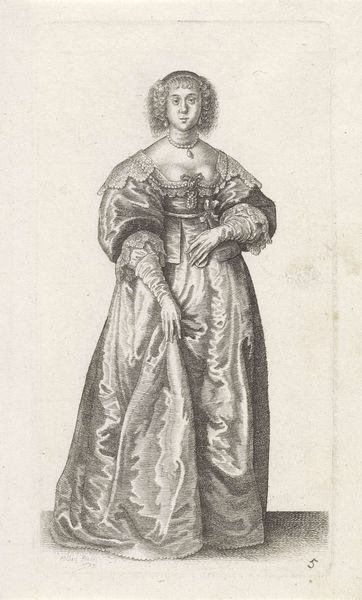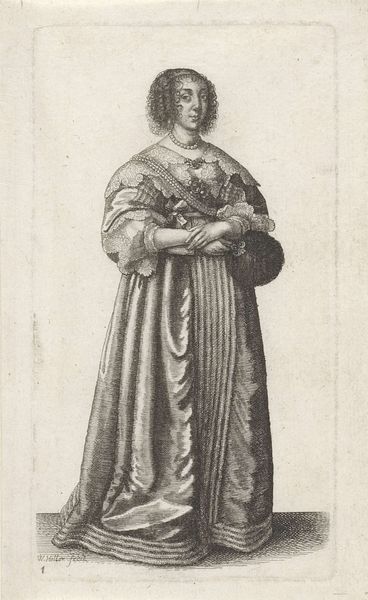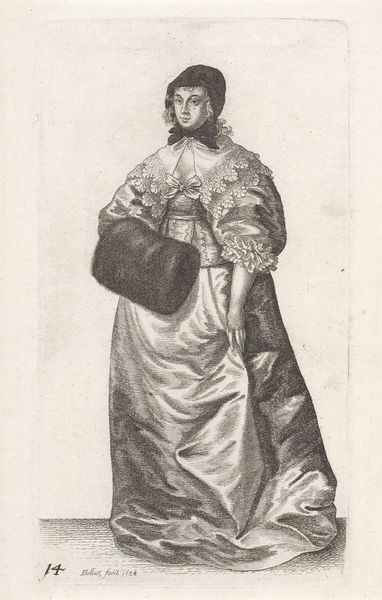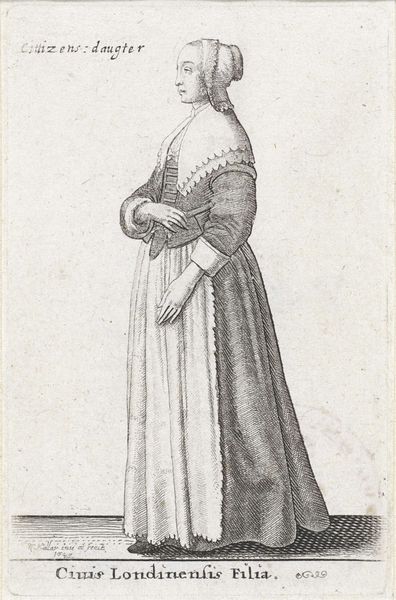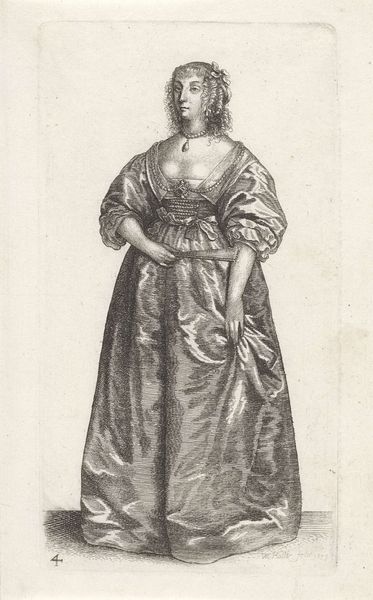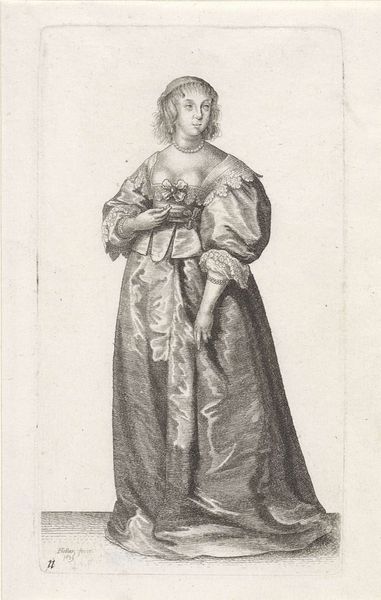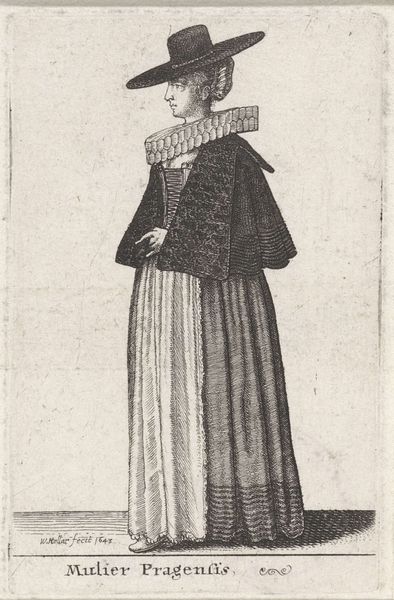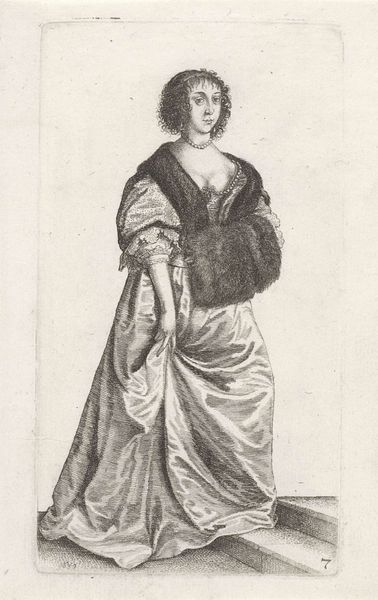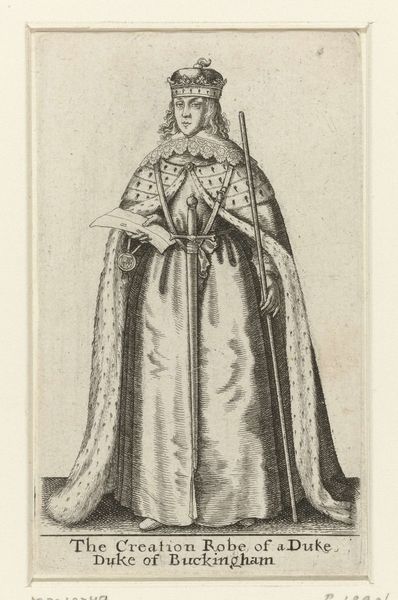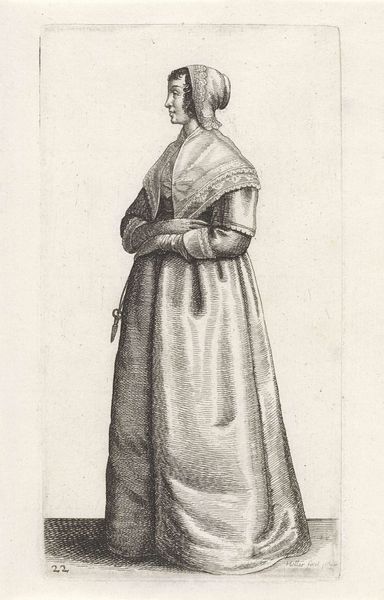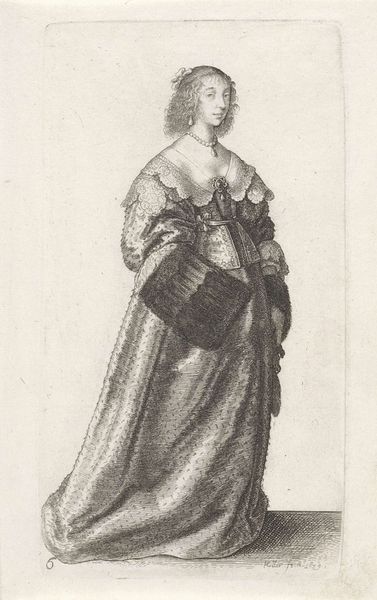
Ornatus Muliebris Anglicanus (The Clothing of English Women) 1640
wenceslaushollar
Rijksmuseum
print, engraving
portrait
baroque
charcoal drawing
portrait drawing
history-painting
dress
engraving
Dimensions: height 131 mm, width 70 mm
Copyright: Rijks Museum: Open Domain
Editor: So here we have Wenceslaus Hollar’s “Ornatus Muliebris Anglicanus” from 1640, an engraving on paper. It depicts an English woman in what looks like very fine clothing. It’s striking how much detail there is in the fabric. What stands out to you about this print? Curator: I’m drawn to the socio-economic context made evident through the materiality represented. Consider the process of creating clothing like this in 1640. Every stitch, every piece of lace—required labor, expertise, and the availability of specific raw materials like silk and metal threads. The very fact of representing these elaborate textiles speaks volumes. Editor: That’s interesting, I hadn’t thought about it like that. So the image is not just about aesthetics but also about production and access? Curator: Precisely! It's about access to particular industries, and also signals the wearer's class status. The fine lines in the engraving meticulously rendering the lace trim, the sheen of the fabric – these aren't just artistic choices, but documents of material culture and economic power. Who would have commissioned a print like this, and for what purpose? It may also be an effort to catalogue specific garment trends during the Baroque era in England. Editor: A way of almost “possessing” the garment even for those who couldn’t afford it. Almost like a very early form of consumerism! Curator: Exactly. The engraving allows the dissemination of these styles, thus influencing fashion trends. Do you notice how the labor that produced these fashions, both in terms of materials and creation, has been intentionally erased, and perhaps this erasure reveals specific values or ideals within a 17th century European community. It makes you think about the labour, skill, and exploitation inherent in those materials and fashion of the era. Editor: I see what you mean. It makes you wonder who made the lace and spun the silk, and how the creation and acquisition of these garments may be deeply related to oppressive historical practices. Curator: Absolutely! It really gives a more complex, and dare I say, more accurate lens when you approach art using a materialist perspective. Editor: Definitely! It's so much more than just a pretty picture of a dress!
Comments
The diversity of women’s apparel in England is illustrated in this extensive costume series. Hollar represented women from all ranks of society, from the humble countrywoman 1 to the elegant noblewoman 2. The more fashionable costumes are based on eyewitness observation of the ladies at the court of the Earl of Arundel, Hollar’s primary patron. They are therefore among the more reliable visual sources for costume historians.
Join the conversation
Join millions of artists and users on Artera today and experience the ultimate creative platform.

